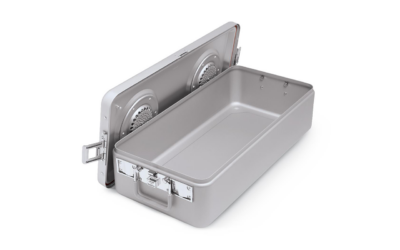The market for disposable medical gloves will be worth $4 billion by 2017, according to projections from a report published by Global Industry Analysts (GIA). The report cites rising emphasis on health, occupational safety and hygiene among health care workers as factors responsible for growth.
Gloves are a staple in medical environments, especially in the operating room. Dozens of pairs are used in a single surgical case, and with the number of surgical procedures performed in the U.S. and across the globe rising, it makes sense that the gloves market is due for sustained growth.
The U.S. is still the largest market for gloves, though Asian markets are the fastest growing, according to the GIA report. The Asian medical glove industry, long known for its production of natural rubber latex, an abundant natural resource in many Asian countries, is beginning to witness major changes. With growing demand for powder-free and synthetic gloves in domestic and foreign markets, Asian manufacturers are beginning to diversify their product portfolio to incorporate powder-free and latex-free medical gloves.
Rising awareness regarding latex allergies have led to increased innovation and technology breakthroughs in synthetic variants. The number of health care facilities going entirely latex-free continues to grow, as glove manufacturers work to create a synthetic product that matches the low cost and tactile sensitivity that have made natural rubber latex the longtime preference of surgeons and nurses.
Manufacturers witnessed a spike in sales of powder-free surgical gloves last year, according to GIA. Robert Gaither, SVP and Regional Director of Ansell North America, said powder-free surgical gloves were the fastest-growing medical product category in 2012 for Ansell. “Sales of Ansell powder-free gloves increased in the U.S. over the previous year, especially those that are part of our non-latex (synthetic) offering,” Gaither says.
Studies published in AORN Journal and Archives of Surgery found that the cornstarch used in powdered gloves binds the latex protein, which allows the allergycausing antigen to reach the wearer’s and patient’s skin more easily. The powder has also been shown to contribute to infection. Dust particles can pick up bacteria in flight, depositing it where they land – in some cases, into an open wound. Powder isn’t as necessary for donning non-latex gloves. Nitrile gloves in particular slide more easily over the hand than their natural counterparts.
Gaither says Ansell’s non-latex gloves sales grew at a rate of greater than 20 percent in the last fiscal year, driven by sales of the company’s polyisoprene surgical gloves. The category includes the DERMA PRENE Ultra surgical glove, which is free of latex and chemical accelerators, and the GAMMEx Non-Latex Sensitive surgical glove, which is up to 30 percent thinner than standard surgical gloves, Gaither says.
Gaither expects health care workers’ preference for synthetic gloves to continue to grow in the years ahead. “Awareness is increasing of latex (type I) and chemical (type IV) allergies, as well as the significant potential cost implications related to these reactions, which can range from a simple rash to a life-threatening anaphylactic event. Due to this awareness, neoprene and polyisoprene gloves have been embraced as a muchneeded alternative to latex gloves and, subsequently, latexfree facilities are becoming more prevalent.”









